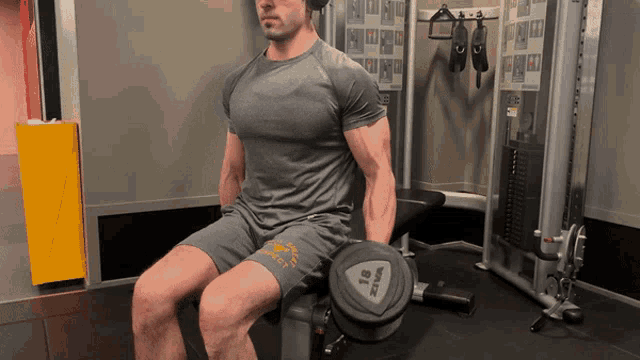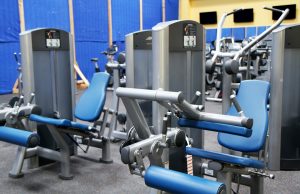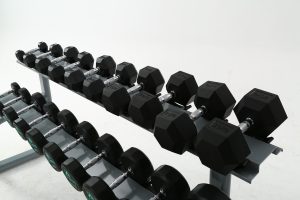2 Exercise modalities
Background
There are several modalities possible for an exercise training plan. When selecting which modalities to include in the training plan, the first thing to consider is what the person has access to use. Access includes not only access to the equipment, but also time. For example, consider the scenario in the box below:
James has a gym at his apartment complex that only has stacked weight machines and limited cardiorespiratory exercise training equipment. Because of this limited availability, he also has a membership to a local fitness facility near his office building. This is a large fitness facility that is fully equipped with a wide variety of equipment. However, James usually is in a hurry to get home after work before the traffic gets too heavy.
Consider
What facility are you going to have in mind when you design a training plan for James? You will have to use the needs assessment to determine what options James is most likely to follow. It will be helpful to ask questions to determine how much time James has, if he is able to go to the fitness facility at other times (before work, at lunchtime), what equipment and atmosphere he likes, and other questions to determine preferences to design a plan that has the best chance of James being successful with his exercise goals.
Other factors to consider when deciding on modalities are the goals of the individual, if any modifications are recommended/required, experience of the individual, and if there are safety concerns. Reflect on these factors when answering the questions below:
Questions
How would your resistance exercise training plan vary when:
- Designing a plan for a beginner vs. someone with resistance exercise experience?
- You are training someone healthy vs. someone who experiences fatigue as part of a chronic condition or disease recover?
- Designing an inclusive exercise plan for a group resistance exercise (or HIIT) training class?
When the topic of modalities comes up for resistance exercises, most people will think of machines (usually stacked weight, but this also includes machines that use a pneumatic (air) system or weight plates for resistance) vs. free weights. However, we can also use other devices, such as resistance bands, suspension straps, stability balls, balance pads/half balls, and other small equipment pieces alone or in conjunction with free weights. The training plan can be variable, and does not have to be the same modality or exact type each session.
Weight machines
Weight machines can be a great option for beginners or people who have an increased likelihood of dropping a weight held in the hands. Because the path of motion is fixed, the person does not have to concentrate on the correct path of motion in addition to posture and other important weight lifting elements. Weight machines also may need less intense supervision of beginners, as cues like “keeping your back against the pad” will keep the person in a low-injury risk position. However, use of weight machines may be limited due to a full set of machines is typically not available in the home, they are not portable, and very limited modifications are possible.
Free weights
Free weights are portable and relatively low cost. There are a large number of exercises that can be done with free weights, and multiple ways to vary an exercise. In addition to different grips (wide, narrow, neutral, etc.), the exercises can be done standing, seated, or kneeling. There can also be different body positions, which can in part be used to modify the exercises to meet individual needs.
With the various free weight motions, it is important that the person exercising is aware of positions and movements to minimize the risk of injury. Just as the person has to train their skeletal muscles to become stronger, the neuromuscular system has to be trained on the correct posture and movement patterns.
Free weights can be used alone, or in conjunction with other modalities. For example, free weights can be used with a balance pad to increase the use of stabilizing muscles throughout the movement.
Examples
For example, a row can be done as a neutral or low row, hinging at the hips or in a plank position, or even laying facedown on a bench. If standing, the feet can be together or in a split leg stance, or on a balance pad.

Lab class activity
Equipment:
Hand weights
Barbell and/or weighted bars
Modalities (balance pads, Bosu balls, exercise balls)
Participants: Each student will participate in the activities.
Instructions:
- In your group, decide at least five techniques for biceps curls that you will each perform. At least two have to be both ‘regular’ and modified. The modification can be either to make the exercise more or less challenging. For example, biceps curls with hand weights in a neutral grip both seated in a chair and seated on an exercise ball.
- Perform the five exercises. Aim for everyone in the group trying all five exercises. Watch each other and give helpful feedback, as needed.
- Discuss with your group which modifications and cues would be good for: 1) people needing a greater challenge; 2) beginners; and 3) modifications to make the exercise more accessible.

Media Attributions
- fitness-room-1178293_1920
- Dumbells on rack
- Renegade row

 Stacked weight machines
Stacked weight machines
